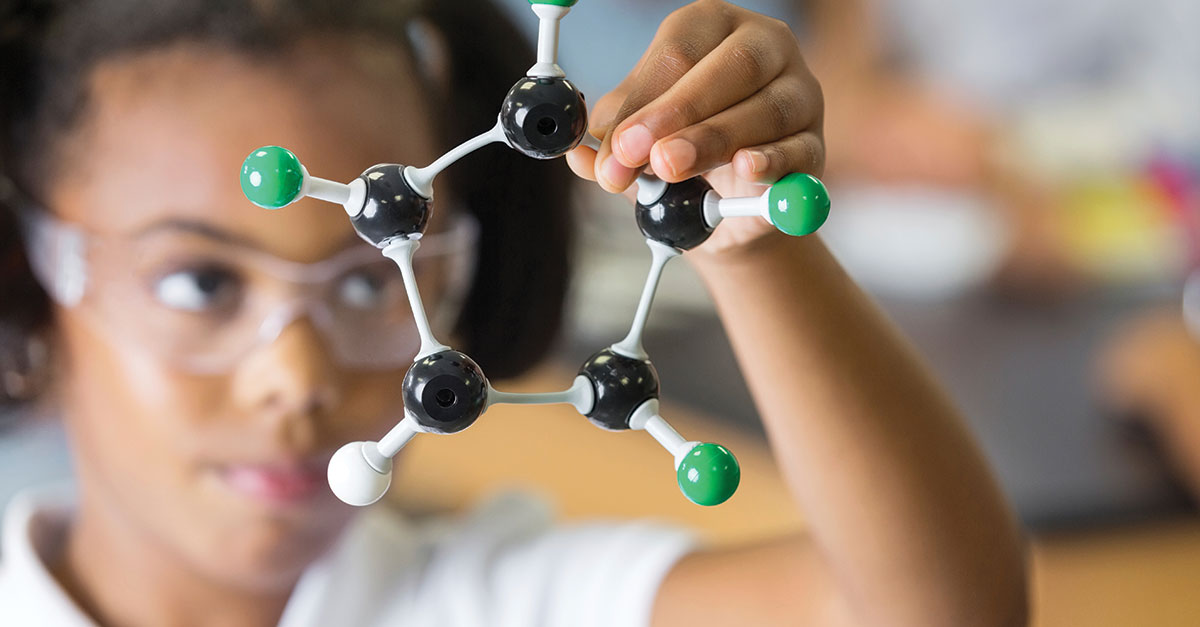If you were to ask someone on the street today what they think the future job market will look like, it is likely you will hear the word “STEM.” The Science, Technology, Engineering and Mathematics field is growing at a dramatic rate, and today’s students will be a vital part of the nation’s future STEM workforce. Given this information, a new brief from the nonprofit, nonpartisan coalition Change the Equation is particularly alarming.
In Ending the Double Disadvantage: Ensuring STEM Opportunities in our Poorest Schools, Change the Equation examined the differences in STEM education that exist between students attending the nation’s lowest-poverty schools (those where less than 25 percent of students qualify for free or reduced price lunch) and the highest-poverty schools (those where 75 percent or more qualify for free or reduced price lunch). Looking at national data from 2015, the brief concluded that the highest-poverty schools are “STEM deserts,” or areas that lack adequate STEM education opportunities.
“At every stage of their K-12 education, students who attend the highest-poverty schools are least likely to have access to STEM resources, experiences, and classes most wealthy parents would demand for their children,” outlined the brief. “As a result, students in such schools suffer disadvantage upon disadvantage over the course of their schooling, and they face dim prospects for rewarding STEM careers.”
Some highlights from the brief:
SCIENCE: The majority of the nation’s highest-poverty schools lack the space and equipment for science labs and fail to offer advanced classes.
- Only 47 percent of the highest-poverty schools gave fourth-graders opportunities to do hands-on science activities at least once per week, compared to 61 percent of the lowest-poverty schools.
- Ninety-five percent of the lowest-poverty schools equipped eighth-graders with science labs, compared to just 82 percent of the highest-poverty schools.
- A mere 43 percent of 12th-graders at the highest-poverty schools had the ability to take any type of physics class, compared to 90 percent of the 12th-graders at the lowest-poverty schools.
MATH: Students at the highest-poverty schools have less access to advanced classes, and their teachers lack resources.
- While 73 percent of the lowest-poverty elementary schools reported having fourth-grade teachers who have “all” or “most” of the resources needed to teach math, only 66 percent of the highest-poverty schools could claim the same level of teacher preparedness. Those numbers were even worse for eighth-graders: 79 percent of the lowest-poverty schools’ eighth-grade teachers were given enough resources, but only 62 percent of the highest-poverty schools’ eighth-grade teachers had the same resources.
- Seventy-two percent of students at the lowest-poverty schools had the option to take AP Calculus BC, but only 30 percent of students at the highest-poverty schools had the ability to take that same course.
- Whereas 88 percent of the lowest-poverty high schools offered 12th-graders the option to take any statistics course, only 52 percent of the highest-poverty 12th-graders were given the same opportunities.
TECHNOLOGY: The highest-poverty schools have one particularly drastic deficiency — computer science classes.
- Of the lowest-poverty high schools, 62 percent offered any computer science class, and 37 percent offered AP Computer Science. Just 26 percent of the highest-poverty schools offered any type of computer science class, with a dismal 8 percent offering AP Computer Science.
Providing students with a STEM education as early as possible should be considered as foundational to ensuring both college and career readiness. CSBA has collected a few resources to aid trustees in their advocacy for equity in STEM education.
CSBA Resources:
- Research Spotlight: Report: Unlocking Learning: Science as a Lever for English Learner Equity (4/2017)
- California Schools Magazine: A New Formula For Science Success in California Classrooms (Spring 2017)
- Governance Brief: Summer and STEAM Make an Ideal Match (11/2016)
- Governance Brief: Supporting the California Next Generation Science Standards (11/2016)





